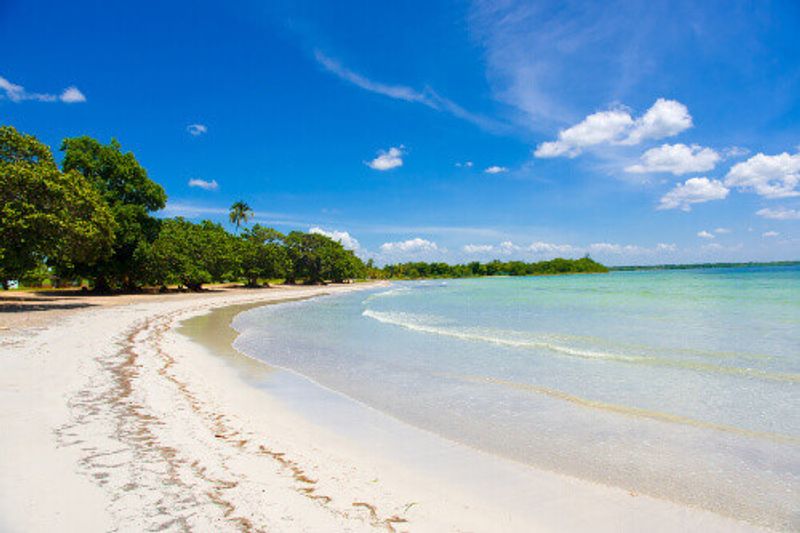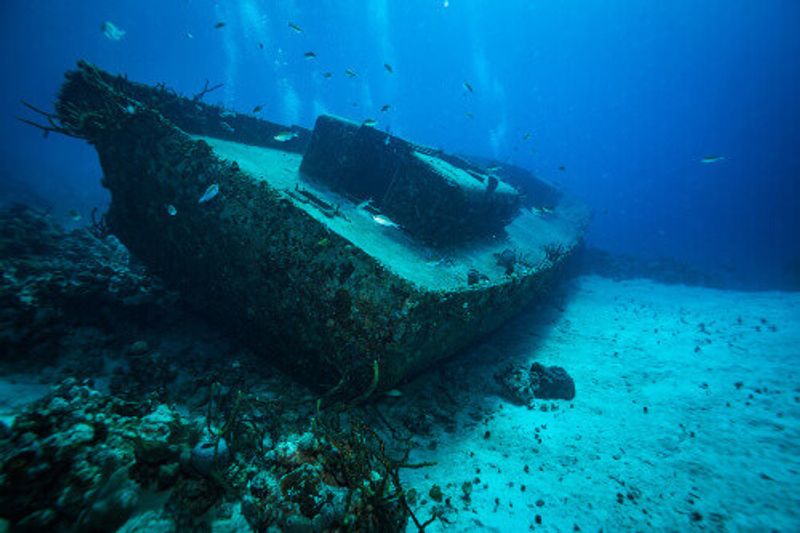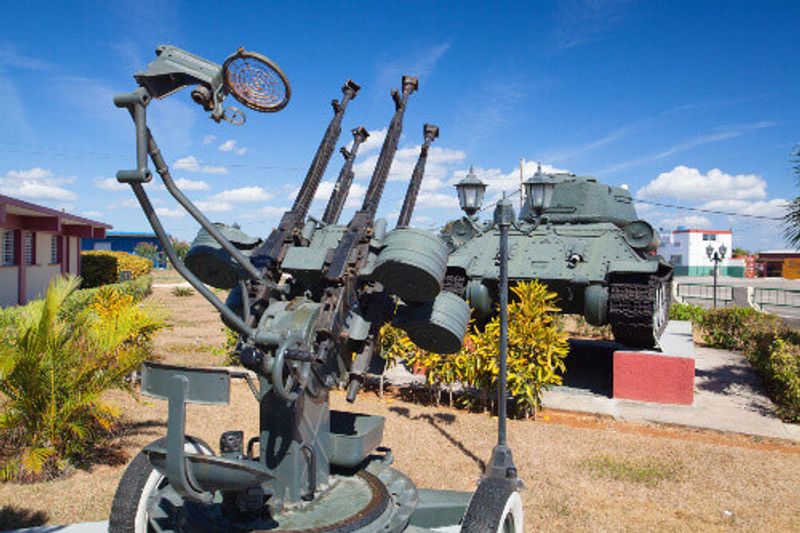The Bay of Pigs is known as the site of the failed US invasion of Cuba but is today one of the country’s best beaches
White sands and crystal clear waters, the Bay of Pigs is a fabulous spot that has become a favourite of snorkellers and divers. On the south side of the island, off the beaten track for most travellers, is relatively tranquil and peaceful year round.
For many, the Bay of Pigs is synonymous with the botched US-sponsored invasion in 1961 that led to the Cuban Missile Crisis. The 1959 Revolution saw the United States ousted from the country and replaced with the Communist Revolutionary leader Fidel Castro. Uncomfortable with a Soviet-backed Communist country on their doorstep, the Americans made numerous failed attempts to overthrow or assassinate the Cuban leader. The CIA, along with a rebel group of exiled Cubans invaded Cuba at the Bay of Pigs in a bid to overthrow Castro’s government but were all captured within three days of the invasion. This bolstered Castro’s standing domestically and led to closer ties between Cuba and the Soviets, leading to the deployment of Soviet missiles in Cuba to deter future invasions. The 1962 Cuban Missile Crisis that ensued was arguably the closest the US and the Soviets came to all-out nuclear attacks during the Cold War.
Today, however, it’s hard to imagine this little patch of beach was almost the starting point of World War III. It is the bright coral, exquisite sponges and triggerfish that draw divers to this remote beach. A dramatic wall drop-off runs around the coast, and the wreck of the Jaruca is also a popular dive site. For more adventurous divers, at the Zapata marshes, there is a deep sinkhole called El Cenote that has been explored but no one has yet found the bottom.
The nearby beaches of Playa Larga and Playa Giron are lovely strips of clear white sandy beach, which was also where the American invasion forces landed back in the 1960s. At Playa Giron, there is a Bay of Pigs Invasion Museum where guides can explain more about the botched attempt. On the east coast of the Bay at Playa Larga, there's an inland cave known as Fish Cave where freshwater fish swim just off the seawater.
Nearby is the Parque Nacional Cienaga de Zapata—the country’s largest national park where all kinds of animals can be found, including crocodiles. And if its crocodiles you’re after, then the Boca de Guama crocodile breeding centre is nearby, too.
So beautiful is this area that Castro himself had a retreat on an island called Cayo Piedra from where he used to go fishing. When Castro was visiting the area following the failed invasion, a local fisherman took him to the island which is found 10 miles offshore. Castro fell in love with it and made it his second home, regularly bringing visiting foreign dignitaries to the island which had a jetty, helipad and even a pool where two trained dolphins would entertain guests. The perks of dictatorship!



